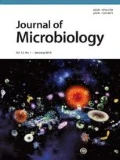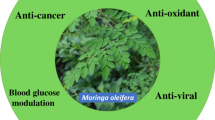Abstract
Mycobacterium tuberculosis (M. tuberculosis) is a highly pathogenic intracellular pathogen that causes tuberculosis (TB), the leading cause of mortality from single infections. Redox homeostasis plays a very important role in the resistance of M. tuberculosis to antibiotic damage and various environmental stresses. The antioxidant sulforaphane (SFN) has been reported to exhibit anticancer activity and inhibit the growth of a variety of bacteria and fungi. Nonetheless, it remains unclear whether SFN exhibits anti-mycobacterial activity. Our results showed that the SFN against M. tuberculosis H37Ra exhibited bactericidal activity in a time and dose-dependent manner. The anti-tubercular activity of SFN was significantly correlated with bacterial reactive oxygen species (ROS) levels. In addition, SFN promoted the bactericidal effect of macrophages on intracellular bacteria in a dose-dependent manner, mediated by increasing intracellular mitochondrial ROS levels and decreasing cytoplasmic ROS levels. Taken together, our data revealed the previously unrecognized antimicrobial functions of SFN. Future studies focusing on the mechanism of SFN in macrophages against M. tuberculosis are essential for developing new host-directed therapeutic approaches against TB.
Similar content being viewed by others
References
Aldini, G., Altomare, A., Baron, G., Vistoli, G., Carini, M., Borsani, L., and Sergio, F. 2018. N-Acetylcysteine as an antioxidant and disulphide breaking agent: the reasons why. Free Radic. Res. 52, 751–762.
Amaral, E.P., Conceição, E.L., Costa, D.L., Rocha, M.S., Marinho, J.M., Cordeiro-Santos, M., D’Império-Lima, M.R., Barbosa, T., Sher, A., and Andrade, B.B. 2016. N-Acetyl-cysteine exhibits potent anti-mycobacterial activity in addition to its known anti-oxidative functions. BMC Microbiol. 16, 251.
Andrews, J.M. 2001. Determination of minimum inhibitory concentrations. J. Antimicrob. Chemother. 48, 5–16.
Beena and Rawat, D.S. 2013. Antituberculosis drug research: a critical overview. Med. Res. Rev. 33, 693–764.
Bonay, M., Roux, A.L., Floquet, J., Retory, Y., Herrmann, J.L., Lofaso, F., and Deramaudt, T.B. 2015. Caspase-independent apoptosis in infected macrophages triggered by sulforaphane via Nrf2/p38 signaling pathways. Cell Death Discov. 1, 15022.
Chen, Y., Azad, M.B., and Gibson, S.B. 2009. Superoxide is the major reactive oxygen species regulating autophagy. Cell Death Differ. 16, 1040–1052.
Choi, W.J., Kim, S.K., Park, H.K., Sohn, U.D., and Kim, W. 2014. Antiinflammatory and anti-superbacterial properties of sulforaphane from shepherd’s purse. Korean J. Physiol. Pharmacol. 18, 33–39.
Cierpiał, T., Kiełbasiński, P., Kwiatkowska, M., Łyzwa, P., Lubelska, K., Kuran, D., Dąbrowska, A., Kruszewska, H., Mielczarek, L., Chilmonczyk, Z., et al. 2020. Fluoroaryl analogs of sulforaphane — A group of compounds of anticancer and antimicrobial activity. Bioorg. Chem. 94, 103454.
De Steenwinkel, J.E.M., de Knegt, G.J., ten Kate, M.T., van Belkum, A., Verbrugh, H.A., Kremer, K., van Soolingen, D., and Bakker-Woudenberg, I.A.J.M. 2010. Time-kill kinetics of anti-tuberculosis drugs, and emergence of resistance, in relation to metabolic activity of Mycobacterium tuberculosis. J. Antimicrob. Chemother. 65, 2582–2589.
Deramaudt, T.B., Ali, M., Vinit, S., and Bonay, M. 2020. Sulforaphane reduces intracellular survival of Staphylococcus aureus in macrophages through inhibition of JNK and p38 MAPKinduced inflammation. Int. J. Mol. Med. 45, 1927–1941.
Dong, C., Zhou, J., Wang, P., Li, T., Zhao, Y., Ren, X., Lu, J., Wang, J., Holmgren, A., and Zou, L. 2019. Topical therapeutic efficacy of ebselen against multidrug-resistant Staphylococcus aureus LT-1 targeting thioredoxin reductase. Front. Microbiol. 10, 3016.
Fahey, J.W., Haristoy, X., Dolan, P.M., Kensler, T.W., Scholtus, I., Stephenson, K.K., Talalay, P., and Lozniewski, A. 2002. Sulforaphane inhibits extracellular, intracellular, and antibiotic-resistant strains of Helicobacter pylori and prevents benzo[a]pyrene-induced stomach tumors. Proc. Natl. Acad. Sci. USA 99, 7610–7615.
Filomeni, G., De Zio, D., and Cecconi, F. 2015. Oxidative stress and autophagy: the clash between damage and metabolic needs. Cell Death Differ. 22, 377–388.
Ganguli, G., Mukherjee, U., and Sonawane, A. 2019. Peroxisomes and oxidative stress: their implications in the modulation of cellular immunity during mycobacterial infection. Front. Microbiol. 10, 1121.
Halliwell, B. and Gutteridge, J.M. 2007. Free Radicals in Biology and Medicine. 4th edn. Oxford University Press, New York, USA.
Heemskerk, D., Caws, M., Marais, B., and Farrar, J. 2015. Tuberculosis in Adults and Children. Springer, London, United Kingdom.
Hong, Y., Li, Q., Gao, Q., Xie, J., Huang, H., Drlica, K., and Zhao, X. 2020. Reactive oxygen species play a dominant role in all pathways of rapid quinolone-mediated killing. J. Antimicrob. Chemother. 75, 576–585.
Jiang, X., Liu, Y., Ma, L., Ji, R., Qu, Y., Xin, Y., and Lv, G. 2018. Chemopreventive activity of sulforaphane. Drug Des. Devel. Ther. 12, 2905–2913.
Johansson, N.L., Pavia, C.S., and Chiao, J.W. 2008. Growth inhibition of a spectrum of bacterial and fungal pathogens by sulforaphane, an isothiocyanate product found in broccoli and other cruciferous vegetables. Planta Med. 74, 747–750.
Kaufmann, S.H.E., Dorhoi, A., Hotchkiss, R.S., and Bartenschlager, R. 2018. Host-directed therapies for bacterial and viral infections. Nat. Rev. Drug Discov. 17, 35–56.
Keren, I., Wu, Y., Inocencio, J., Mulcahy, L.R., and Lewis, K. 2013. Killing by bactericidal antibiotics does not depend on reactive oxygen species. Science 339, 1213–1216.
Kilinç, G., Saris, A., Ottenhoff, T.H.M., and Haks, M.C. 2021. Host-directed therapy to combat mycobacterial infections. Immunol. Rev. 301, 62–83.
Kohanski, M.A., Dwyer, D.J., Hayete, B., Lawrence, C.A., and Collins, J.J. 2007. A common mechanism of cellular death induced by bactericidal antibiotics. Cell 130, 797–810.
Kumar, A., Farhana, A., Guidry, L., Saini, V., Hondalus, M., and Steyn, A.J.C. 2011. Redox homeostasis in mycobacteria: the key to tuberculosis control? Expert Rev. Mol. Med. 13, e39.
Kumar, A., Toledo, J.C., Patel, R.P., Lancaster, J.R.Jr, and Steyn, A.J. 2007. Mycobacterium tuberculosis DosS is a redox sensor and DosT is a hypoxia sensor. Proc. Natl. Acad. Sci. USA 104, 11568–11573.
Lee, W. and Lee, D.G. 2014. Lycopene-induced hydroxyl radical causes oxidative DNA damage in Escherichia coli. J. Microbiol. Biotechnol. 24, 1232–1237.
Li, D., Shao, R., Wang, N., Zhou, N., Du, K., Shi, J., Wang, Y., Zhao, Z., Ye, X., Zhang, X., et al. 2021. Sulforaphane activates a lysosome-dependent transcriptional program to mitigate oxidative stress. Autophagy 17, 872–887.
Liu, Y. and Imlay, J.A. 2013. Cell death from antibiotics without the involvement of reactive oxygen species. Science 339, 1210–1213.
Mo, S., Liu, X., Zhang, K., Wang, W., Cai, Y., Ouyang, Q., Zhu, C., Lin, D., Wan, H., Li, D., et al. 2021. Flunarizine suppresses Mycobacterium tuberculosis growth via calmodulin-dependent phagosome maturation. J. Leukoc. Biol. 111, 1021–1029.
Ouyang, Q., Zhang, K., Lin, D., Feng, C.G., Cai, Y., and Chen, X. 2020. Bazedoxifene suppresses intracellular Mycobacterium tuberculosis growth by enhancing autophagy. mSphere 5, e00124–20.
Palucci, I. and Delogu, G. 2018. Host directed therapies for tuberculosis: futures strategies for an ancient disease. Chemotherapy 63, 172–180.
Pei, Z., Wu, K., Li, Z., Li, C., Zeng, L., Li, F., Pei, N., Liu, H., Zhang, S.L., Song, Y.Z., et al. 2019. Pharmacologic ascorbate as a pro-drug for hydrogen peroxide release to kill mycobacteria. Biomed. Pharmacother. 109, 2119–2127.
Piasecka, A., Jedrzejczak-Rey, N., and Bednarek, P. 2015. Secondary metabolites in plant innate immunity: conserved function of divergent chemicals. New Phytol. 206, 948–964.
Singh, V. and Chibale, K. 2021. Strategies to combat multi-drug resistance in tuberculosis. Acc. Chem. Res. 54, 2361–2376.
Taati Moghadam, M., Amirmozafari, N., Shariati, A., Hallajzadeh, M., Mirkalantari, S., Khoshbayan, A., and Masjedian Jazi, F. 2020. How phages overcome the challenges of drug resistant bacteria in clinical infections. Infect. Drug Resist. 13, 45–61.
Tian, X., Jiang, X., Welch, C., Croley, T.R., Wong, T.Y., Chen, C., Fan, S., Chong, Y., Li, R., Ge, C., et al. 2018. Bactericidal effects of silver nanoparticles on lactobacilli and the underlying mechanism. ACS Appl. Mater. Interfaces 10, 8443–8450.
Vanduchova, A., Anzenbacher, P., and Anzenbacherova, E. 2019. Isothiocyanate from broccoli, sulforaphane, and its properties. J. Med. Food 22, 121–126.
Vilchèze, C., Hartman, T., Weinrick, B., and Jacobs, W.R.Jr. 2013. Mycobacterium tuberculosis is extraordinarily sensitive to killing by a vitamin C-induced Fenton reaction. Nat. Commun. 4, 1881.
Wang, G., Hong, Y., Johnson, M.K., and Maier, R.J. 2006. Lipid peroxidation as a source of oxidative damage in Helicobacter pylori: protective roles of peroxiredoxins. Biochim. Biophys. Acta 1760, 1596–1603.
Wang, Y., Mandal, A.K., Son, Y.O., Pratheeshkumar, P., Wise, J.T.F., Wang, L., Zhang, Z., Shi, X., and Chen, Z. 2018. Roles of ROS, Nrf2, and autophagy in cadmium-carcinogenesis and its prevention by sulforaphane. Toxicol. Appl. Pharmacol. 353, 23–30.
Wang, W., Yang, J., Zhang, J., Liu, Y.X., Tian, C., Qu, B., Gao, C., Xin, P., Cheng, S., Zhang, W., et al. 2020. An Arabidopsis secondary metabolite directly targets expression of the bacterial type III secretion system to inhibit bacterial virulence. Cell Host Microbe 27, 601–613.
Warner, D.F. and Mizrahi, V. 2006. Tuberculosis chemotherapy: the influence of bacillary stress and damage response pathways on drug efficacy. Clin. Microbiol. Rev. 19, 558–570.
Wayne, L.G. and Hayes, L.G. 1996. An in vitro model for sequential study of shiftdown of Mycobacterium tuberculosis through two stages of nonreplicating persistence. Infect. Immun. 64, 2062–2069.
World Health Organization, WHO. 2021. Global tuberculosis report 2020. World Health Organization, Geneva, Switzerland.
Xie, Z., Siddiqi, N., and Rubin, E.J. 2005. Differential antibiotic susceptibilities of starved Mycobacterium tuberculosis isolates. Antimicrob. Agents Chemother. 49, 4778–4780.
Zumla, A., Nahid, P., and Cole, S.T. 2013. Advances in the development of new tuberculosis drugs and treatment regimens. Nat. Rev. Drug Discov. 12, 388–404.
Acknowledgements
This work was supported by Anhui Provincial Natural Science Foundation (2108085J17, 2108085QH351), Program of BBMC (by51201310, BYLK201820), Natural Science Research Project of Anhui Educational Committee (KJ2020A0556), Excellent Talents Supporting Plan in Universities of Anhui Province (gxyq2021189), Key Research and Development Program of Anhui (201904A07020022), and Training Programs of Innovation and Entrepreneurship (Byycx20014, Byycx21047, 202010367032, 202110367021).
Author information
Authors and Affiliations
Corresponding authors
Additional information
Conflict of Interest
The authors declare no conflict of interest.
Electronic supplementary material
Rights and permissions
About this article
Cite this article
Zhao, Y., Shang, S., Song, Y. et al. Sulforaphane kills Mycobacterium tuberculosis H37Ra and Mycobacterium smegmatis mc2155 through a reactive oxygen species dependent mechanism. J Microbiol. 60, 1095–1105 (2022). https://doi.org/10.1007/s12275-022-2284-8
Received:
Revised:
Accepted:
Published:
Issue Date:
DOI: https://doi.org/10.1007/s12275-022-2284-8




